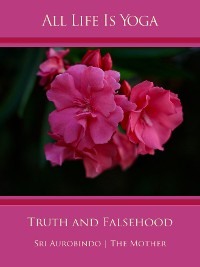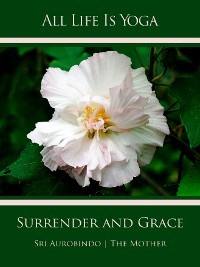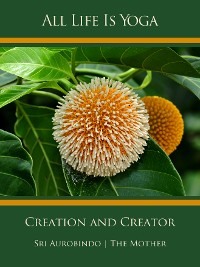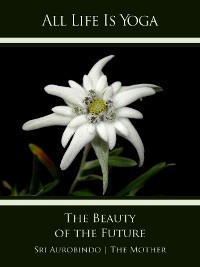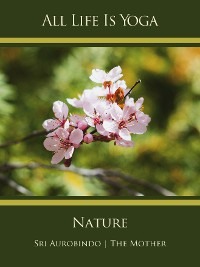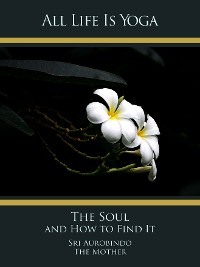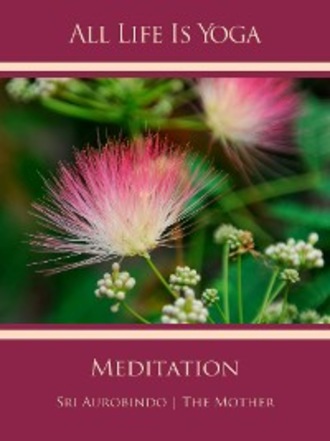
Полная версия
All Life Is Yoga: Meditation
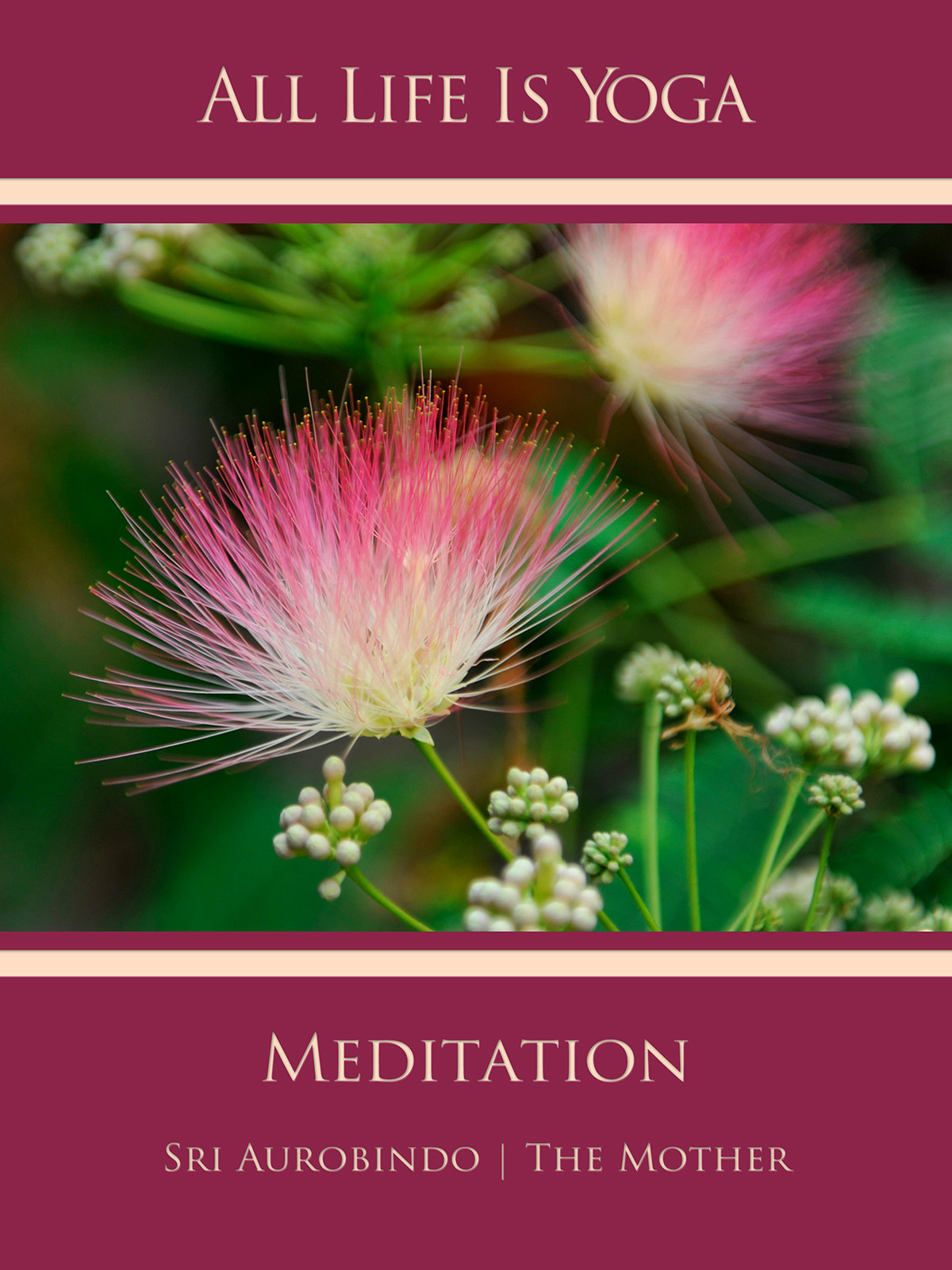

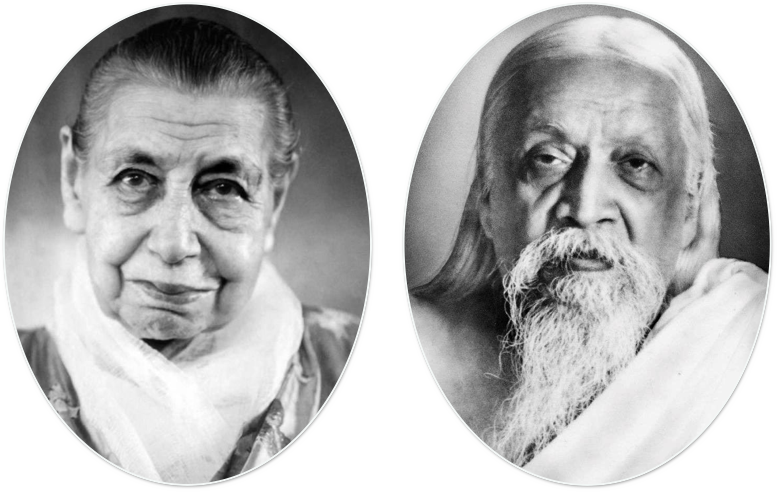
Omsriaurobindomira
All
Life
Is
Yoga
“All life is Yoga.” – Sri Aurobindo
Meditation
Sri Aurobindo | The Mother

SRI AUROBINDO
DIGITAL EDITION

Copyright 2019
AURO MEDIA
Verlag und Fachbuchhandel
Wilfried Schuh
www.auro.media
eBook Design

SRI AUROBINDO DIGITAL EDITION
Germany, Berchtesgaden
ALL LIFE IS YOGA
Meditation Selections from the Works of Sri Aurobindo and The Mother Second edition 2019 ISBN 978-3-96387-017-0
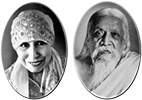
© Photos and selections of the works of Sri Aurobindo and the Mother:
Sri Aurobindo Ashram Trust
Puducherry, India

Flower on the cover:
Albizia saman. Pink. Spiritual significance and explanation given by the Mother: Wisdom Can only be acquired through union with the Divine Consciousness.
Publisher’s Note
This is one in a series of some e-books created by SRI AUROBINDO DIGITAL EDITION and published by AURO MEDIA under the title All Life Is Yoga. Our effort is to bring together, from Sri Aurobindo and the Mother, simple passages with a practical orientation on specific subjects, so that everyone may feel free to choose a book according to his inner need. The topics cover the whole field of human activity, because true spirituality is not the rejection of life but the art of perfecting life.
While the passages from Sri Aurobindo are in the original English, most of the passages from the Mother (selections from her talks and writings) are translations from the original French. We must also bear in mind that the excerpts have been taken out of their original context and that a compilation, in its very nature, is likely to have a personal and subjective approach. A sincere attempt, however, has been made to be faithful to the vision of Sri Aurobindo and the Mother. These excerpts are by no means exhaustive.
Bringing out a compilation from the writings of Sri Aurobindo and the Mother, which have a profound depth and wideness unique, is a difficult task. The compiler’s subjective tilt and preferences generally result in highlighting some aspects of the issues concerned while the rest is by no means less significant. Also without contexts of the excerpts the passages reproduced may not fully convey the idea – or may be misunderstood or may reduce a comprehensive truth into what could appear like a fixed principle.
The reader may keep in mind this inherent limitation of compilations; compilations are however helpful in providing an introduction to the subject in a handy format. They also give the readers a direct and practical feel of some of the profound issues and sometimes a mantric appeal, musing on which can change one’s entire attitude to them.
The excerpts from the writings of Sri Aurobindo and the Mother carry titles and captions chosen by the editor, highlighting the theme of the excerpts and, whenever possible, borrowing a phrase from the text itself. The sources of the excerpts are given at the end of each issue.
We hope these compilations will inspire the readers to go to the complete works of Sri Aurobindo and the Mother and will help them to mould their lives and their environments towards an ever greater perfection.
“True spirituality is not to renounce life, but to make life perfect with a Divine Perfection.” – The Mother
* * *
ContentsTitle PageCopyrightPublisher’s NoteQuotations from the MotherI. BASIC EXPLANATION1. What Meditation Exactly Means2. What Should Be the Objects or Ideas for Meditation3. Most Essential Conditions for Meditation4. Two Common Difficulties in Meditation5. The First Thing to Know: Why One Meditates6. The One Need7. How to MeditateII. TRUE MEDITATION1. Inner Contemplation2. Pseudo-Meditation and the True Humility3. The State of Samadhi and Progress4. Forces Brought In During Meditation5. Length of the Meditation PeriodIII. DIFFERENT KINDS OF MEDITATION1. Different Kinds of Meditation2. Meditation on a Sentence3. Imagination and Meditation4. Collective MeditationIV. GUIDANCE TO DISCIPLES1. Indispensable Complement of Meditation: Work2. Meditation, Devotion and WorksV. SADHANA THROUGH MEDITATION1. Three Powers of Concentration – Their Right Use2. Utility of Meditation and Contemplation in Yoga3. Difficulties of Meditation4. Concentration – Nature and Importance5. How to Concentrate6. Centres of ConcentrationAPPENDIXReferencesGuideCoverTable of ContentsStart Reading

The Mother
A sincere consecration of all you are and all you do is for the sadhana much more effective than meditation. — The Mother
True love and consecration lead much quicker to the Divine than an arduous Tapasya. — The Mother
* * *
Part I
BASIC EXPLANATION
Meditation is the easiest process for the human mind, but the narrowest in its results; contemplation more difficult, but greater; self-observation and liberation from the chains of Thought the most difficult of all, but the widest and greatest in its fruits. — Sri Aurobindo
Chapter 1
What Meditation Exactly Means
Words of Sri Aurobindo
There are two words used in English to express the Indian idea of Dhyana, “meditation” and “contemplation”. Meditation means properly the concentration of the mind on a single train of ideas which work out a single subject. Contemplation means regarding mentally a single object, image, idea so that the knowledge about the object, image or idea may arise naturally in the mind by force of the concentration. Both these things are forms of dhyana; for the principle of dhyana is mental concentration whether in thought, vision or knowledge.
There are other forms of dhyana. There is a passage in which Vivekananda advises you to stand back from your thoughts, let them occur in your mind as they will and simply observe them and see what they are. This may be called concentration in self-observation.
This form leads to another, the emptying of all thought out of the mind so as to leave it a sort of pure vigilant blank on which the divine knowledge may come and imprint itself, undisturbed by the inferior thoughts of the ordinary human mind and with the clearness of a writing in white chalk on a blackboard. You will find that the Gita speaks of this rejection of all mental thought as one of the methods of Yoga and even the method it seems to prefer. This may be called the dhyana of liberation, as it frees the mind from slavery to the mechanical process of thinking and allows it to think or not think as it pleases and when it pleases, or to choose its own thoughts or else to go beyond thought to the pure perception of Truth called in our philosophy Vijnana.
Meditation is the easiest process for the human mind, but the narrowest in its results; contemplation more difficult, but greater; self-observation and liberation from the chains of Thought the most difficult of all, but the widest and greatest in its fruits. One can choose any of them according to one’s bent and capacity. The perfect method is to use them all, each in its own place and for its own object; but this would need a fixed faith and firm patience and a great energy of Will in the self-application to the Yoga.
* * *
Chapter 2
What Should Be the Objects or Ideas for Meditation
Words of Sri Aurobindo
Whatever is most consonant with your nature and highest aspirations. But if you ask me for an absolute answer, then I must say that Brahman is always the best object for meditation or contemplation, and the idea on which the mind should fix is that of God in all, all in God and all as God. It does not matter essentially whether it is the Impersonal or the Personal God or, subjectively, the One Self. But this is the idea I have found the best, because it is the highest and embraces all other truths, whether truths of this world or of the other worlds or beyond all phenomenal existence, – “All this is the Brahman.”
In the third issue of Arya1, at the end of the second instalment of the Analysis of the Isha Upanishad, you will find a description of this vision of the [Brahman] which may be of help to you in understanding the idea.
* * *
1 See “The Vision of the Brahman” in Isha Upanishad, volume 17 of THE COMPLETE WORKS OF SRI AUROBINDO, p. 30. The passage was first published in the third issue of the Arya, dated October 1914. – Ed.
Chapter 3
Most Essential Conditions for Meditation
Words of Sri Aurobindo
There are no essential external conditions, but solitude and seclusion at the time of meditation as well as stillness of the body are helpful, sometimes almost necessary to the beginner. But one should not be bound by external conditions. Once the habit of meditation is formed, it should be made possible to do it in all circumstances, lying, sitting, walking, alone, in company, in silence or in the midst of noise etc.
The first internal condition necessary is concentration of the will against the obstacles to meditation, ie wandering of the mind, forgetfulness, sleep, physical and nervous impatience and restlessness etc.
The second is an increasing purity and calm of the inner consciousness (citta) out of which thought and emotion arise; ie a freedom from all disturbing reactions, such as anger, grief, depression, anxiety about worldly happenings etc. Mental perfection and moral are always closely allied to each other.
*
......
Chapter 4
Two Common Difficulties in Meditation
Words of Sri Aurobindo
The mind is always in activity, but we do not observe fully what it is doing, but allow ourselves to be carried away in the stream of continual thinking. When we try to concentrate, this stream of self-moved mechanical thinking becomes prominent to our observation. It is the first normal obstacle (the other is sleep during meditation) to the effort towards Yoga.
The first thing to do is to realise that this thought-flow is not yourself, it is not you who are thinking, but thought that is going on in the mind. It is Prakriti with its thought-energy that is raising all this whirl of thought in you, imposing it on the Purusha. You as the Purusha must stand back as the witness observing the action, but refusing to identify yourself with it. The next thing is to exercise a control and reject the thoughts – though sometimes by the very act of detachment the thought-habit falls away or diminishes during the meditation and there is a sufficient silence or at any rate a quietude which makes it easy to reject the thoughts that come and fix oneself on the object of meditation. If one becomes aware of the thoughts as coming from outside, from the universal Nature, then one can throw them away before they reach the mind; in that way the mind finally falls silent. If neither of these things happens, a persistent practice of rejection becomes necessary – there should be no struggle or wrestling with the thoughts, but only a quiet self-separation and refusal. Success does not come at first, but if consent is constantly withheld, the mechanical whirl eventually lessens and begins to die away and one can then have at will an inner quietude or silence.
It should be noted that the result of the Yogic processes is not, except in rare cases, immediate and one must apply them with patience till they give a result which is sometimes long in coming if there is much resistance in the outer nature.
*
......
Chapter 5
The First Thing to Know: Why One Meditates
Words of the Mother
It [a dynamic meditation] is a meditation that has the power of transforming your being. It is a meditation which makes you progress, as opposed to static meditation which is immobile and relatively inert, and which changes nothing in your consciousness or in your way of being. A dynamic meditation is a meditation of transformation.
......
Chapter 6
The One Need
Words of the Mother
Is not an increasing effort of meditation needed and is it not true that the more hours you meditate the greater progress you make?
The number of hours spent in meditation is no proof of spiritual progress. It is a proof of your progress when you no longer have to make an effort to meditate. Then you have rather to make an effort to stop meditating: it becomes difficult to stop meditation, difficult to stop thinking of the Divine, difficult to come down to the ordinary consciousness. Then you are sure of progress, then you have made real progress when concentration in the Divine is the necessity of your life, when you cannot do without it, when it continues naturally from morning to night whatever you may be engaged in doing. Whether you sit down to meditation or go about and do things and work, what is required of you is consciousness; that is the one need, – to be constantly conscious of the Divine.
But is not sitting down to meditation an indispensable discipline, and does it not give a more intense and concentrated union with the Divine?
That may be. But a discipline in itself is not what we are seeking. What we are seeking is to be concentrated on the Divine in all that we do, at all times, in all our acts and in every movement. There are some here who have been told to meditate; but also there are others who have not been asked to do any meditation at all. But it must not be thought that they are not progressing. They too follow a discipline, but it is of another nature. To work, to act with devotion and an inner consecration is also a spiritual discipline. The final aim is to be in constant union with the Divine, not only in meditation but in all circumstances and in all the active life.
......
Chapter 7
How to Meditate
Words of the Mother
The method is always the same. Gather together the energies in you that are usually dispersed outside; concentrate your consciousness within, beneath the surface agitation, and establish, as far as possible, a perfect quietness in your heart and head; then formulate your aspiration, if you have one, and open yourself to receive the divine force from above.
*
Words of the Mother
What is real meditation then?
It is an active and deliberate concentration on the Divine Presence and a sustained, alert contemplation of that Sublime Reality.
*
......
Part II
TRUE MEDITATION
Each meditation ought to be a new revelation, for in each meditation something new happens. — The Mother
Chapter 1
Inner Contemplation
Correct contemplation
Words of the Mother
How often there is a kind of emptiness in the course of life, an unoccupied moment, a few minutes, sometimes more. And what do you do? Immediately you try to distract yourself, and you invent some foolishness or other to pass your time. That is a common fact. All men, from the youngest to the oldest, spend most of their time in trying not to be bored. Their pet aversion is boredom and the way to escape from boredom is to act foolishly.
Well, there is a better way than that – to remember.
When you have a little time, whether it is one hour or a few minutes, tell yourself, “At last, I have some time to concentrate, to collect myself, to relive the purpose of my life, to offer myself to the True and the Eternal.” If you took care to do this each time you are not harassed by outer circumstances, you would find out that you were advancing very quickly on the path. Instead of wasting your time in chattering, in doing useless things, reading things that lower the consciousness – to choose only the best cases, I am not speaking of other imbecilities which are much more serious – instead of trying to make yourself giddy, to make time, that is already so short, still shorter only to realise at the end of your life that you have lost three-quarters of your chance – then you want to put in double time, but that does not work – it is better to be moderate, balanced, patient, quiet, but never to lose an opportunity that is given to you, that is to say, to utilise for the true purpose the unoccupied moment before you.
When you have nothing to do, you become restless, you run about, you meet friends, you take a walk, to speak only of the best; I am not referring to things that are obviously not to be done. Instead of that, sit down quietly before the sky, before the sea or under trees, whatever is possible (here you have all of them) and try to realise one of these things – to understand why you live, to learn how you must live, to ponder over what you want to do and what should be done, what is the best way of escaping from the ignorance and falsehood and pain in which you live.
*
......
Chapter 2
Pseudo-Meditation and the True Humility
Words of the Mother
“There are some who, when they are sitting in meditation, get into a state which they think very fine and delightful.” – Questions and Answers 1929 – 1931 (21 April 1929)
What is this state?
Whatever it may be, they think their state is delightful and remarkable. They have a very high opinion of themselves. They believe they are remarkable people because they are able to sit quietly without moving; and if they don’t think of anything, that is remarkable. But usually it is a kind of kaleidoscope that is going on in their head, they do not even notice it. Still, those who can remain for a moment without moving, without speaking and thinking, have certainly a very high opinion of themselves. Only, as I have said, if they are pulled out of it, if someone comes and knocks at the door and they are told, “There is somebody waiting for you”, or “Madam, your child is crying”, they immediately get furious and say: “There, my meditation is spoilt! Completely spoilt.” I am telling you things I have seen with my own eyes. People who were very serious in their meditation, and could not be interrupted in their meditation without their getting violently angry.... Naturally this is not a sign of great spiritual progress. They stormed against everybody because they had been pulled out of their beatific meditation.
......
Chapter 3
The State of Samadhi and Progress
Words of the Mother
“Is the state of trance or Samadhi a sign of progress?”
In ancient times it was considered a very high condition. It was even thought to be the sign of a great realisation, and people who wanted to do yoga or sadhana always tried to enter into a state of this kind. All sorts of marvellous things have been said about this state – you may say all you like about it, since, precisely, you don’t remember anything! And those who have entered it are unable to say what happened to them. So, one can say anything one likes.
I could incidentally tell you that in all kinds of so-called spiritual literature I had always read marvellous things about this state of trance or Samadhi, and it so happened that I had never experienced it. So I did not know whether this was a sign of inferiority. And when I came here, one of my first questions to Sri Aurobindo was: “What do you think of Samadhi, that state of trance one does not remember? One enters into a condition which seems blissful, but when one comes out of it, one does not know at all what has happened.” Then he looked at me, saw what I meant and told me, “It is unconsciousness.” I asked him for an explanation, I said, “What?” He told me, “Yes, you enter into what is called Samadhi when you go out of your conscious being and enter a part of your being which is completely unconscious, or rather a domain where you have no corresponding consciousness – you go beyond the field of your consciousness and enter a region where you are no longer conscious. You are in the impersonal state, that is to say, a state in which you are unconscious; and that is why, naturally, you remember nothing, because you were not conscious of anything.”1 So this reassured me and I said, “Well, this has never happened tome.”He replied, “Nor to me!” (Laughter)
And since then, when people speak to me about Samadhi, I tell them, “Well, try to develop your inner individuality and you will be able to enter these very regions in full consciousness and have the joy of communion with the highest regions, but without losing all consciousness and returning with a zero instead of an experience.”
So that is my reply to the person who has asked if Samadhi or trance is a sign of progress. The sign of progress is when there is no longer any unconsciousness, when one can go up into the same regions without entering into trance.
*
......
1 When this talk was first published in 1962, Mother added the following commentary: “There are also some people who enter domains where they are conscious, but between this conscious state and their normal waking consciousness there is a gap: their personality does not exist between the waking state and this deeper state; so, during the passage they forget. They cannot bring the consciousness they had there back into the consciousness here, for there is a gap between the two. There is even an occult discipline for constructing intermediary fields in order to be able to recall things.”
Chapter 4
Forces Brought In During Meditation
Words of the Mother
What are the forces that are in operation when one is in silent meditation?
That depends upon the one who meditates.
But in silent meditation does he not make himself a complete blank? Then how can anything depend upon him?
Even if you make yourself an absolute blank, that does not change the nature of your aspiration or alter its domain. In some the aspiration moves on the mental level or in the vital field; some have a spiritual aspiration. On the quality of the aspiration depends the force that answers and the work that it comes to do. To make yourself blank in meditation creates an inner silence; it does not mean that you have become nothing or have become a dead and inert mass. Making yourself an empty vessel, you invite that which shall fill it. It means that you release the stress of your inner consciousness towards realisation. The nature of the consciousness and the degree of its stress determine the forces that you bring into play and whether they shall help and fulfil or fail or even harm and hinder.





